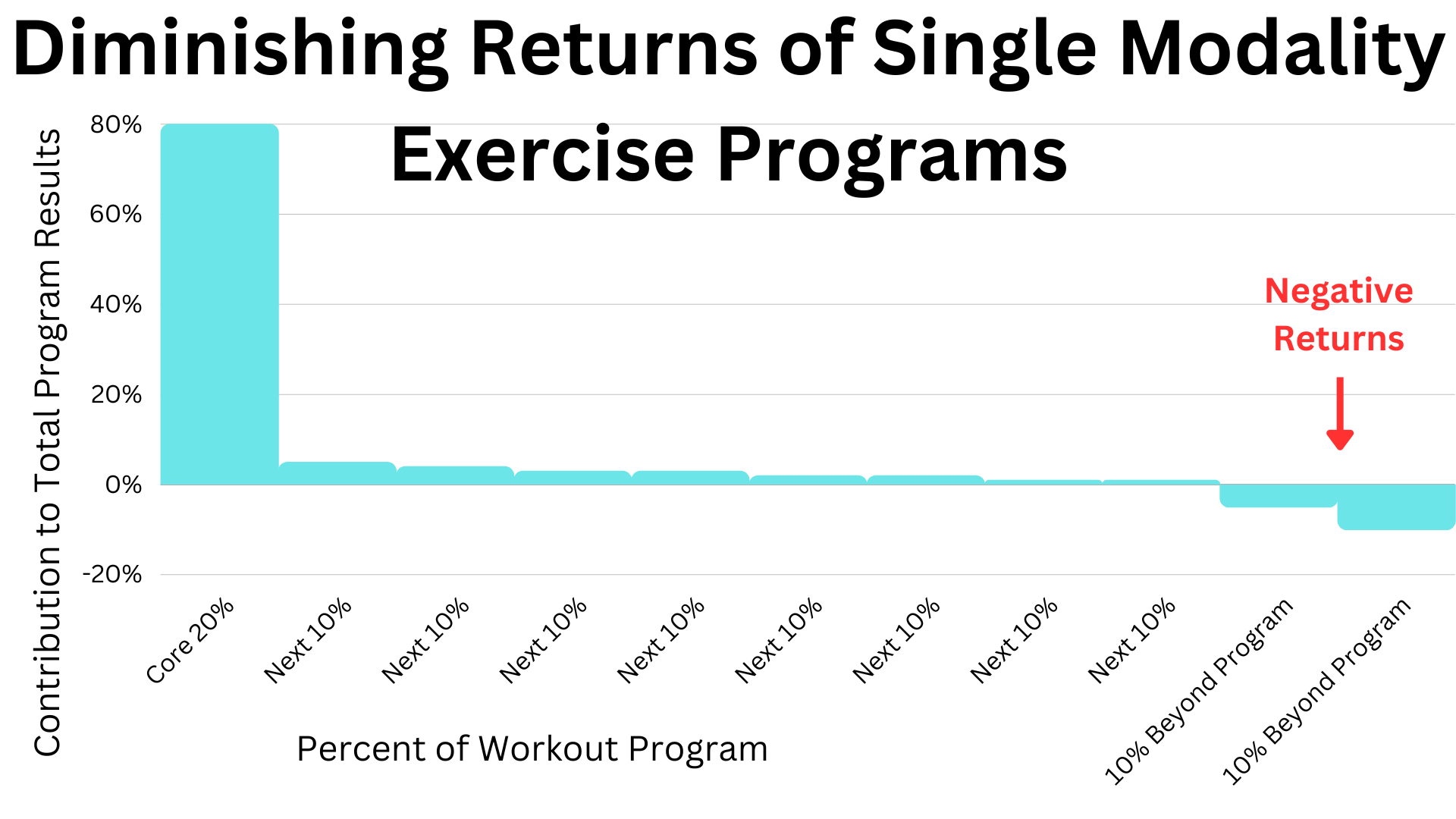The Pareto Principle Applied to Cross-Training
Written By Kyle Ligon - MovementLink.FIT Head Coach
Epiphany: In studying the workout programs of world-class athletes from all sports and areas of fitness, regardless of if it was a strength, speed, or endurance sport, the majority of the results in these single-modality sports were driven by a minority portion of the workout programs.
It reminded me of the Pareto Principle, also known as the 80/20 Rule, which states that 80% of outcomes stem from only 20% of the efforts while the remaining 80% of the efforts produce only 20% of the outcomes. Although, the specifics for each sport are different and the actual percentages are inevitably not 80% and 20%, in each world-class program, a core minority of the workout program was responsible for driving the majority of the results. Once an athlete goes beyond the core 20% of a modality-specific workout program like yoga, weightlifting, powerlifting, sprinting, or endurance, diminishing returns accumulate exponentially. For those who are trying to be the best in the world, they must pay that price, but for me, who does not want to dedicate all my time to working out, if I were to follow a single-modality program, most of the efforts would come with extremely high opportunity costs.
But, will doing only the core components of these programs drive enough results for me?
The best powerlifters are able to squat and bench press over 1,000 pounds (sounds crazy, but that’s real) and the best marathon runners in the world average about a 4 minute and 30 second mile pace for the entirety of a marathon (absolutely insane). The results in a specific area that can be generated are astronomical and with the majority of results driven by the core components of these programs, there’re plenty of gains to be made by simply following these core components. What if, after we have put in the core effort in one of these areas, instead of continuing to put efforts into the same things causing higher and higher diminishing returns, we shifted our efforts to an extremely high-return core of a different program?

